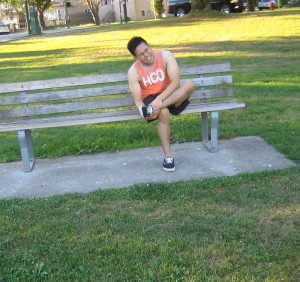A neuroma is described as thickening of the nerve tissue that forms in different parts of the body. Morton’s neuroma is a common form in the foot that develops amidst the 3rd and 4th toes.
The thickening of the nerve is due to the compression and irritation of the nerve. The crushing force triggers the enlargement of the nerve, ultimately leading to lasting nerve damage.
Anything that results to the irritation or compression of the nerve can lead to the formation of a neuroma such as:
- Wearing shoes that have high-heels or a tapered toe box
- Certain forms of foot deformities such as hammertoes, bunions, flatfeet or having a flexible foot.
- Engaging in activities that involve repeated irritation to the ball of the foot such as contact sports or running
- Injuries or other forms of trauma
Feeling that there is something in the shoe or sock that is bunched up.
What are the indications?
If an individual has Morton’s neuroma, he/she might have one or several of these symptoms where the nerve damage is positioned:
- Pain or discomfort
- Burning, tingling or numbness
- Sensation that something is within the ball of the foot
- Feeling that there is something in the shoe or sock that is bunched up
It is important to note that the progression of the neuroma often follows this sequence:
- The onset of the symptoms is gradual. Initially, they only arise occasionally if wearing narrow-toed shoes or engaging in certain aggravating activities.
- The symptoms briefly settle if the shoe is removed, massaging the foot or avoiding any aggravating footwear or activities.
- After some time, the symptoms worsen progressively and might persist for several days or weeks.
- The symptoms intensify as the growth enlarges and the temporary changes in the nerve become permanent.
How is it diagnosed
Before deciding on a diagnosis, the doctor will take the history of the symptoms and assess the foot. During a physical exam, the doctor tries to reproduce the symptoms by manipulation of the foot. In some cases, other tests or imaging studies might be required.
The ideal time to consult a doctor is early in the onset of the symptoms. Immediate diagnosis of Morton’s neuroma drastically lessens the need for invasive treatments and might help avoid surgery.
Management of Morton’s neuroma
When creating a treatment plan for Morton’s neuroma, the doctor will initially determine how long the individual had the neuroma and assess its phase of development. The treatment options tend to vary based on the severity of the condition.
For minor to moderate cases, the treatment options include:
- Padding – this helps provide support for the metatarsal arch to lessen the pressure on the nerve and reduce the compression while walking
- Application of ice – place an ice pack on the affected area to minimize the swelling
- Activity modification – avoid those that place repeated pressure on the neuroma until the condition improves
- Medications – oral non-steroidal anti-inflammatory drugs (NSAIDs) might be suggested to minimize the inflammation and pain
- Injection therapy – cortisone, local anesthetics or other agents are injected to relieve the symptoms
Do I need surgery?
Surgery might be an option for cases that do not effectively respond to the conservative measures. The doctor will determine the ideal approach. The length of the recovery period is based on the procedure carried out.
Regardless of whether the individual has undergone surgery or conservative treatment, the doctor will recommend long-term measures to prevent the recurrence of the symptoms. Generally, these include wearing the right footwear and activity modifications to minimize repeated pressure on the foot.

